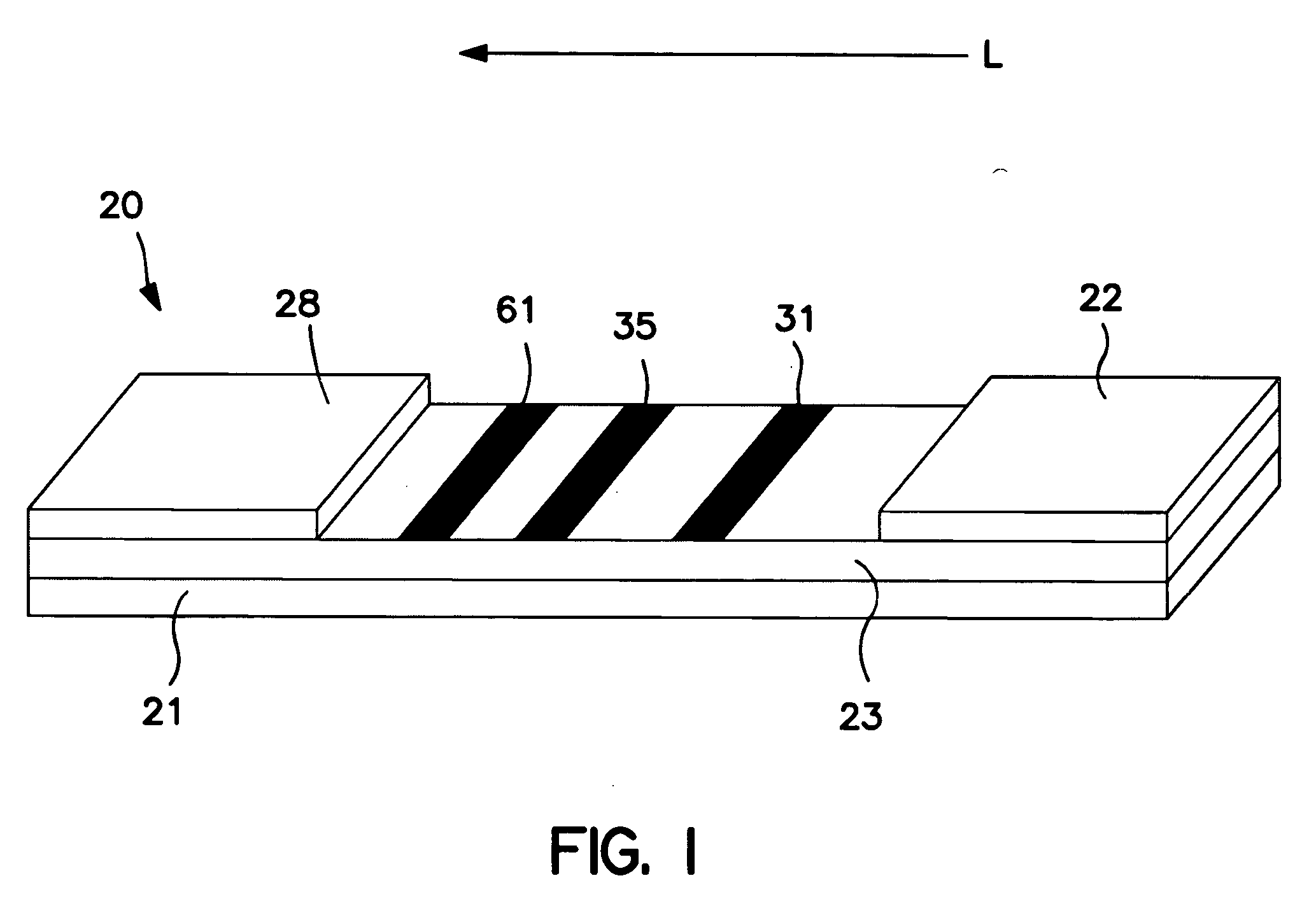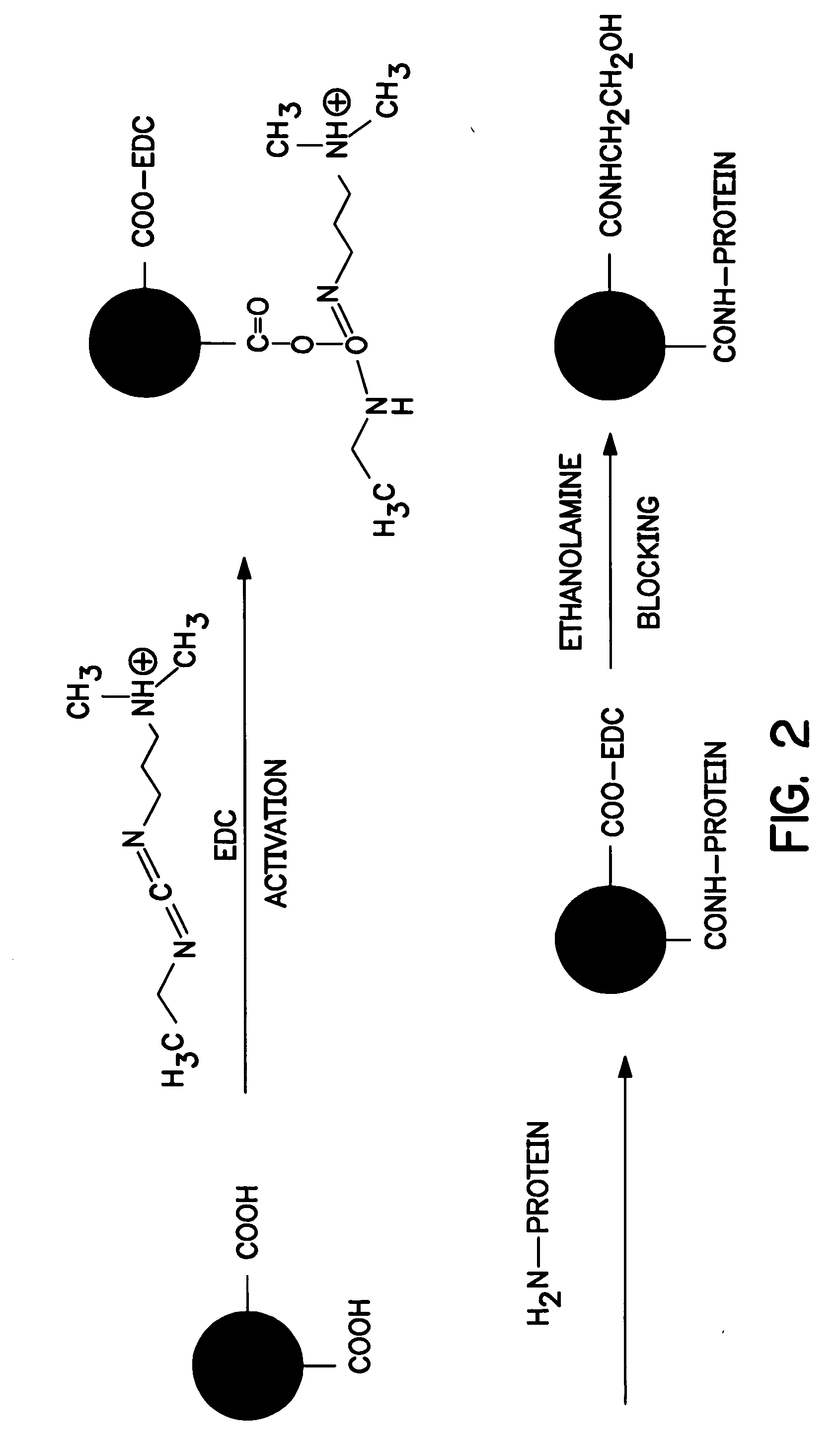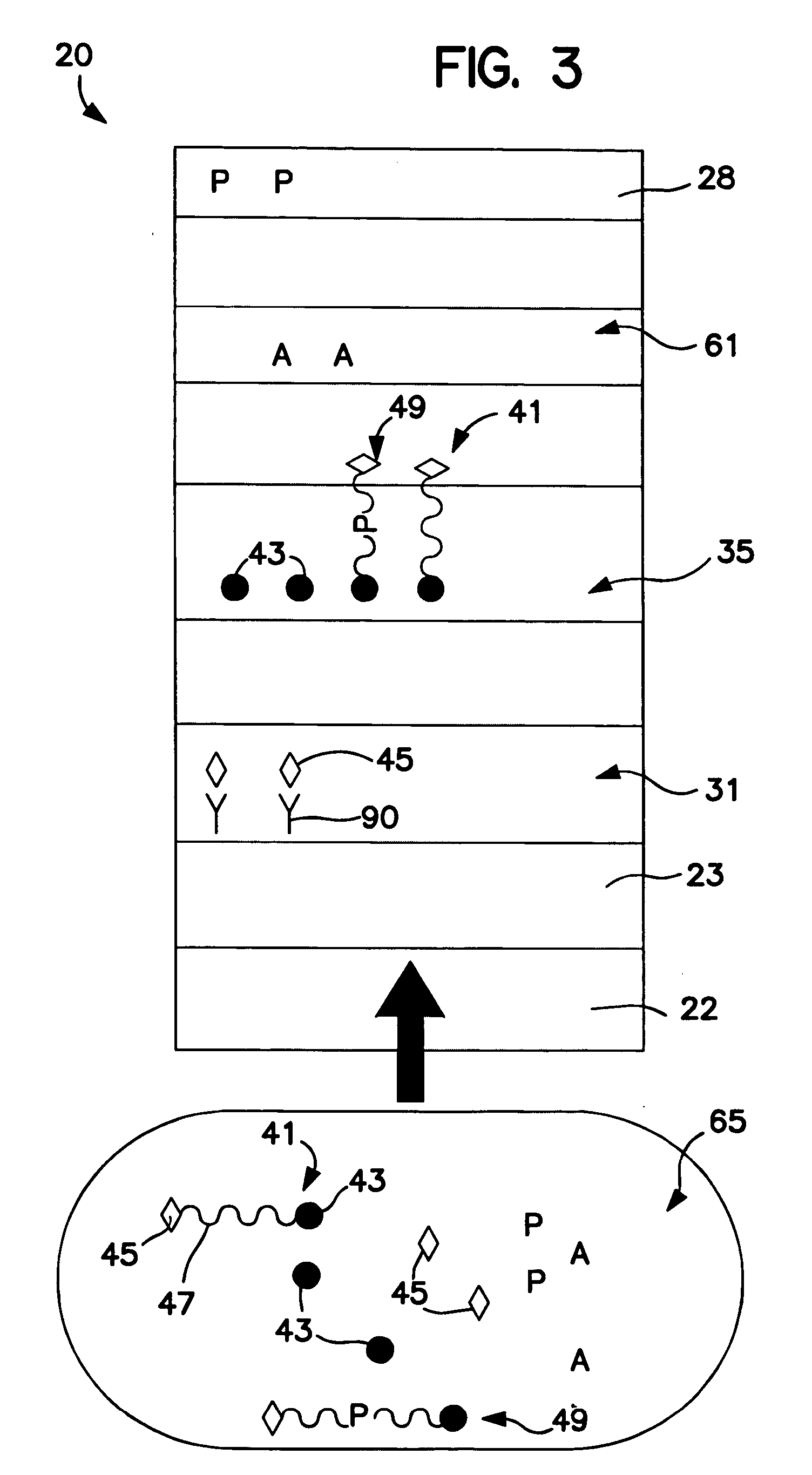One-step enzymatic and amine detection technique
a technology of detection method, which is applied in the field of one-step enzymatic and amine detection method, can solve the problems of inability to detect a single molecule,
- Summary
- Abstract
- Description
- Claims
- Application Information
AI Technical Summary
Problems solved by technology
Method used
Image
Examples
example 1
[0094]β-casein was initially conjugated to dyed particles. Specifically, 2 milliliters of blue carboxylated particles (0.3-micrometer particle size, Bangs Laboratories, Inc. of Fisher, Ind.) were washed once with phosphate-buffered saline (PBS from Polysciences, Inc. of Warrington, Pa.) and then suspended in 1 milliliter of PBS. 36 milligrams of carbodiimide (Polysciences, Inc.) in 1 milliliter of PBS was added and the mixture was shaken for 30 minutes. The particles were washed twice with a borate buffer (Polysciences, Inc.), and then suspended in 1 milliliter of borate buffer. 1 milligram of β-casein (Sigma-Aldrich Chemical Co., Inc. of St. Louis, Mo.) was added and the mixture was shaken overnight at room temperature. The particles were washed once with the borate buffer and then re-suspended in 500 microliters of borate buffer. 1 milliliter of ethanolamine solution (0.1 molar, Polysciences Inc.) was added to the particles and shaken for 30 minutes. The particles were then washed...
example 2
[0096] The ability to form a membrane-based device for amine and / or enzyme assays was demonstrated. Initially, Millipore HF12002 porous nitrocellulose membranes were laminated onto corresponding supporting cards having a length of approximately 30 centimeters. Streptavidin (1.0 milligram per milliliter, Sigma-Aldrich Chemical Co., Inc.) was striped onto the membrane to form a first enzyme detection zone and Goldline™ (a polylysine solution obtained from British Biocell International) was striped onto the membrane (downstream from the first enzyme detection zone) to form a second enzyme detection zone. Alpha-naphtholbenzein (ANB) (5 milligrams per milliliter, Sigma-Aldrich Chemical Co., Inc.) was also striped onto the membrane (downstream from the enzyme detection zones) to form an amine detection zone. The membrane was dried for 1 hour at 37° C. A cellulosic fiber wicking pad (Millipore Co.) was attached to the end of the membrane closest to the amine detection zone. The assembled c...
example 3
[0097] The ability to form a membrane-based device for amine and / or enzyme assays was demonstrated. Initially, Millipore HF12002 porous nitrocellulose membranes were laminated onto corresponding supporting cards having a length of approximately 30 centimeters. Anti-biotin antibody (2.0 milligrams per milliliter, Sigma-Aldrich Chemical Co., Inc.) was striped onto the membrane to form a first enzyme detection zone and Goldline™ (a polylysine solution obtained from British Biocell International) was striped onto the membrane (downstream from the first enzyme detection zone) to form a second enzyme detection zone. ANB dye (Sigma-Aldrich Chemical Co., Inc.) was also striped onto the membrane (downstream from the enzyme detection zones) to form an amine detection zone. The membrane was dried for 1 hour at 37° C. A cellulosic fiber wicking pad (Millipore Co.) was attached to the end of the membrane closest to the ANB dye zone. The assembled card was then cut into 4-millimeter wide devices....
PUM
| Property | Measurement | Unit |
|---|---|---|
| Color | aaaaa | aaaaa |
| Magnetism | aaaaa | aaaaa |
| Affinity | aaaaa | aaaaa |
Abstract
Description
Claims
Application Information
 Login to View More
Login to View More - R&D
- Intellectual Property
- Life Sciences
- Materials
- Tech Scout
- Unparalleled Data Quality
- Higher Quality Content
- 60% Fewer Hallucinations
Browse by: Latest US Patents, China's latest patents, Technical Efficacy Thesaurus, Application Domain, Technology Topic, Popular Technical Reports.
© 2025 PatSnap. All rights reserved.Legal|Privacy policy|Modern Slavery Act Transparency Statement|Sitemap|About US| Contact US: help@patsnap.com



